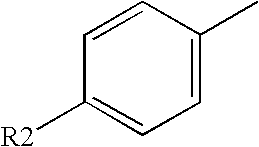Electrolyte media for the deposition of tin alloys and methods for depositing tin alloys
a technology of electrolyte media and tin alloy, which is applied in the direction of refractive reflectors, mechanical apparatus, optical elements, etc., can solve the problems of inability to use tin alone, inability to produce zinc alloys, and inability to meet the requirements of tin-copper alloy fatigue strength
- Summary
- Abstract
- Description
- Claims
- Application Information
AI Technical Summary
Benefits of technology
Problems solved by technology
Method used
Image
Examples
example 1
[0047]A bath medium was made to the following formulation:
[0048]
Sodium Gluconate150 g / lBoric Acid100 g / lStannous Sulphate Anhydrous30 g / lCobalt Sulphate Hexahydrate100 g / lLugalvan BNO 24*1 g / lEmpicol ESB3 Anionic Surfactant**1 g / l*Lugalvan BNO 24 is an ethoxylated beta-napthol in accordance with a compound of class e). It is manufactured by BASF.**Empicol ESB3 is an anionic surfactant manufactured by Albright & Wilson PLC.
[0049]The bath was heated to 50° C. and a Hull cell test was performed at 1 amp for 10 minutes using agitation by mechanical stirrer. The resultant deposit was smooth and even. At a position on the panel corresponding to a primary current density of 4 A / dm2, a tin cobalt alloy was obtained having a composition of approximately 16% cobalt with the balance being tin. This example illustrates that a significant decrease in the amount of cobalt (as compared to the intermetallic composition) is achieved using the electrolyte medium of the invention. A still further redu...
example 2
[0050]A bath medium was made to the following formulation:
[0051]
Sodium Gluconate150 g / lBoric Acid100 g / lStannous Sulphate Anhydrous30 g / lNickel Sulphate Hexahydrate75 g / lCobalt Sulphate Hexahydrate7 g / lLugalvan BNO 241 g / lEmpicol ESB31 g / l
[0052]A Hull cell test as in Example 1 was performed at a temperature of 20° C. The deposit obtained was smooth and even. At a position on the panel corresponding to a primary current density of 4A / dm2, a tin nickel cobalt alloy was obtained having a composition of 8-10% nickel and 1-2% cobalt with the balance being tin. This example illustrates that a ternary tin-cobalt-nickel alloy can be produced using the electrolyte medium, resulting in an alloy having useful amounts of nickel and cobalt.
example 3
[0053]A Hull cell test was performed on a bath of composition as in Example 1, but substituting nickel sulphate hexahydrate for cobalt sulphate hexahydrate, and using the same conditions as in Example 1. A tin-nickel alloy was obtained having a composition of about 14% nickel, with the balance being tin.
PUM
| Property | Measurement | Unit |
|---|---|---|
| time | aaaaa | aaaaa |
| time | aaaaa | aaaaa |
| frequency | aaaaa | aaaaa |
Abstract
Description
Claims
Application Information
 Login to View More
Login to View More - R&D
- Intellectual Property
- Life Sciences
- Materials
- Tech Scout
- Unparalleled Data Quality
- Higher Quality Content
- 60% Fewer Hallucinations
Browse by: Latest US Patents, China's latest patents, Technical Efficacy Thesaurus, Application Domain, Technology Topic, Popular Technical Reports.
© 2025 PatSnap. All rights reserved.Legal|Privacy policy|Modern Slavery Act Transparency Statement|Sitemap|About US| Contact US: help@patsnap.com



